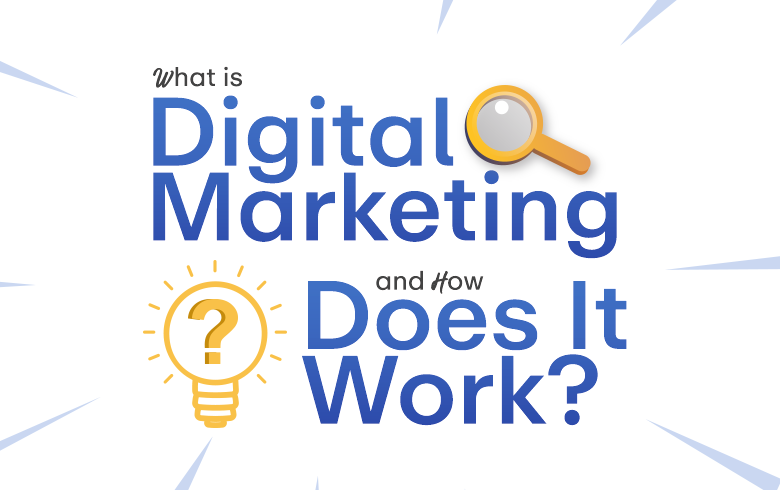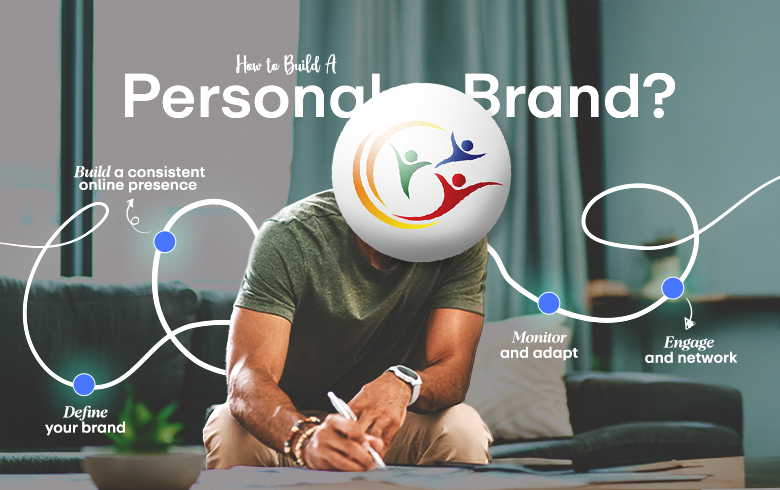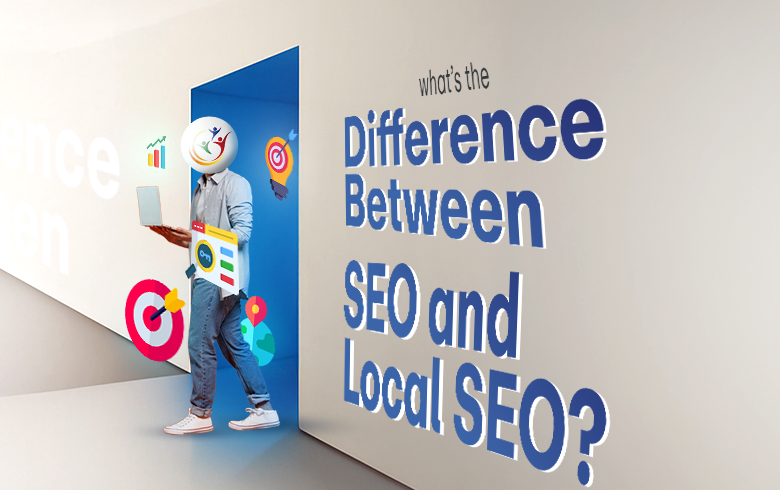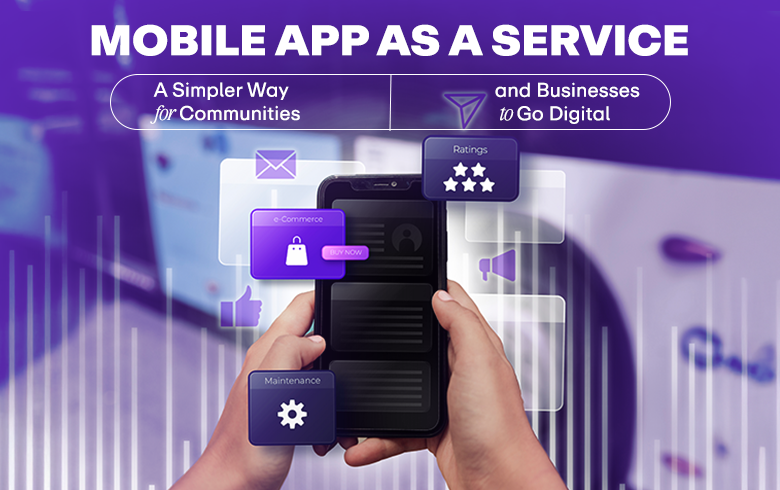We all have a story, skills, and unique qualities. But those are not enough. To stand out, we must learn how to build a personal brand. A personal brand is the impression people have when they hear your name or see your work. It is about what you stand for, how you express yourself, and how others perceive you.
In this guide, we will walk you through a friendly, easy-to-understand path on how to build a personal brand. We will also explain the commonly asked frameworks like the 7 steps, the 5 A’s, the 7 pillars, and the 5 C’s. At the end, you’ll find a FAQ section answering these specifically so you can refer back easily.
What is a Personal Brand?
Before we dive into how to build personal brand, let’s make sure we know what it is. A personal brand is the set of ideas, stories, values, and perceptions people associate with you. It is not about being fake or overly polished; it is about clarity, consistency, authenticity, and visibility.
When someone hears your name or sees your profile, what comes to their mind? That is partly your personal brand. Over time, by your words, actions, presence, and how well you live your values, your personal brand becomes stronger.
Why It Matters to Build Your Personal Brand?
When you build a personal brand well, many doors open. People begin to trust you, opportunities come your way, and your voice carries weight. You no longer compete just on skills, but with reputation. In a crowded world, your personal brand becomes your unique edge.
Now let us move into how to build personal brand in practical steps.
What Are the 7 Steps to Building Your Personal Brand?
Here is one powerful path you can follow when you want to build personal brand. These are seven progressive steps to help you grow steadily.
Step 1: Self-Discovery and Clarity
To build your brand, first you must know who you are. What are your values, passions, strengths, and areas you want to grow in? What do you stand for? What themes or topics do you naturally draw to? When you write down your answers, you begin to see your personal brand’s core.
Also ask: Who is your ideal audience? Who do you want to serve, help, or influence? That helps tailor your brand rather than trying to appeal to everyone.
Step 2: Define Your Unique Value Proposition
Now translate your clarity into a message. What unique value do you bring? What problems can you solve? What experience or insight do you offer that others may not? This becomes your promise, your brand’s core message.
You can craft a short “brand statement” summarizing that value, for example: “I help emerging writers become confident storytellers” or “I guide small businesses to grow online with simple tools.”
Step 3: Choose Your Platforms and Channels
You don’t need to be everywhere. Choose a few platforms (blog, LinkedIn, Instagram, YouTube, podcast) that suit your style and where your audience is active. Your presence must be consistent there. Also having a personal website gives you a home you fully control.
Make sure your profiles, photos, bios all reflect your brand message and look aligned.
Step 4: Create and Share Valuable Content
Content is the heart of how people know you. Write posts, record videos, share stories, speak, teach. Focus on content that helps, teaches, inspires. Don’t try to sell all the time. Let your content reflect your message and your values.
When you share freely and genuinely, people begin to trust and follow you.
Step 5: Show Up Consistently
One post or one video is not enough. To build recognition, you must show up again and again. Be regular. It could be posting weekly or monthly, but the key is you stay visible. Over time repetition helps people remember you.
Consistency also means your tone, style, visuals stay similar across your posts.
Step 6: Engage and Build Relationships
Your brand is not a monologue. It is conversation. Reply to comments, talk to people, attend events (online or offline), collaborate, support others. When you nurture relationships, people feel connected to you. They begin to promote you naturally.
Step 7: Measure, Learn, and Adapt
Track how your content is doing. Which posts got more engagement? Which topics sparked questions? Use insights to refine what you focus on. Ask your audience for feedback. Over time adjust your message, approach, and channels. A personal brand grows by learning.
These 7 steps form a cycle rather than a straight path. As you evolve, you may revisit earlier steps with new insight.
What Are the 5 A’s of Personal Branding?
Another useful framework when we study how to build personal brand is the 5 A’s. These are five qualities that your personal brand should try to express. Though different authors define them slightly differently, a common version is:
- Awareness
- Authority
- Appearance
- Authenticity
- Audience
Let’s explain each:
Awareness means people should know you exist in your field. Without awareness, your message goes unheard.
Authority means you are seen as credible. That comes from sharing knowledge, experience, proof, doing the work, and being consistent.
Appearance refers not just to how you dress, but how your visuals, profile, images, style all reflect your brand identity.
Authenticity means being real. People sense if something is forced. Your brand must reflect your true self, not a mask.
Audience is the group you serve. Always keep them in mind. Your brand is not about pleasing yourself only; it must resonate with your intended people.
When you aim to reflect all 5 A’s, your personal brand becomes more balanced and effective.
Which 7 Pillars Build a Strong Personal Brand?
To deepen your understanding, here is a concept of 7 pillars on which a strong personal brand rests. These pillars are the foundation; if any pillar is weak, the brand feels shaky.
Some common 7 pillars used by thought leaders are:
- Purpose
- Values
- Brand Clarity
- Strengths
- Energy
- Legacy
- Ownership
Here’s what they guide:
- Purpose – Why you do what you do.
- Values – The principles you will not compromise.
- Brand Clarity – Clear message, identity, what you stand for.
- Strengths – What you do best, your differentiators.
- Energy – Your enthusiasm, consistency, how you sustain your brand.
- Legacy – What impact you want to leave, how you’ll be remembered.
- Ownership – Taking responsibility to build, protect, evolve your brand.
By checking your brand against these seven pillars, you can strengthen weak areas. A brand built on solid pillars is more enduring.
The 5 C’s of Branding (for Personal Brand)
While more often used in corporate branding, the 5 C’s can also apply when you learn how to build personal brand. The 5 C’s are:
- Clarity
- Consistency
- Content
- Communication
- Connection
Here’s how they fit:
Clarity – You must be clear about your message, niche, and who you are. Without clarity, your brand becomes vague.
Consistency – Every interaction, post, visual, and conversation must reflect your brand so people do not get mixed signals.
Content – The substance you deliver. Good content gives you credibility and memorability.
Communication – How you express your ideas, how you respond, how you speak, write. Communication carries your brand voice.
Connection – The relationships you form. Branding without connection is shallow. Connection makes your brand human.
Using the 5 C’s helps you check that your brand is strong in both what you do (content, communication) and how you act (clarity, consistency, connection).
Integrating All Frameworks While You Build
When you work on how to build personal brand, you can use all these ideas together. The 7 steps are your roadmap. The 5 A’s remind you of traits to aim for. The 7 pillars show the structure you should maintain. The 5 C’s help you check how balanced your brand is.
Here is how a person might integrate:
- In your self-discovery phase, you work on purpose, values (pillars), clarity (C), authenticity (A).
- While forming your value proposition, you think of your audience (A), strengths (pillar), communication (C).
- When choosing platforms and creating content, you ensure consistency (C), content (C), appearance (A).
- While engaging, you build connection (C), audience (A).
- When you measure your work, you check authority (A), who is noticing you, and whether your pillars hold up.
By weaving them, your brand is not one dimensional but multidimensional and resilient.
Common Mistakes to Avoid
As you build your brand, watch out for these traps:
Trying to be too broad or appeal to everyone
Changing your message too often
Not engaging, only broadcasting
Hiding behind anonymity or lack of face
Ignoring feedback and not evolving
Focusing only on quantity and neglecting quality
Avoiding these will keep your brand stable and trustworthy.
Learning how to build a personal brand is not about overnight success or copying what others do. It’s about slow, honest growth, consistent presence, meaningful content, and real relationships. Use the frameworks above as helpful guides not rigid rules and adapt them to your style, niche, and pace.
At My Community (MYCT), our Branding Services in USA are designed to help you do exactly that. We empower individuals, creators, and businesses to build authentic, lasting brands through smart strategy, creative storytelling, and digital tools that amplify your voice. Whether you’re shaping your personal identity or positioning your business in a competitive market, our AI-driven branding solutions, content frameworks, and community engagement tools give you the edge to grow with confidence.
When you begin, be patient. Many don’t see results immediately but with MYCT’s branding guidance, you don’t walk the path alone. Our experts and AI-powered insights help you refine your message, grow your audience, and stay consistent. Stay true to your mission, engage with purpose, and keep learning from feedback. Over time, your name will gain recognition, and your personal brand will become a bridge to the opportunities you seek supported every step of the way by My Community.
Q.What are the 7 steps to building your personal brand?
A.The 7 steps are:
1.Self-discovery and clarity
2.Define your unique value proposition
3.Choose platforms and channels
4.Create and share valuable content
5.Show up consistently
6.Engage and build relationships
7.Measure, learn, and adapt
Q.What are the 5 A’s of personal branding?
A.The 5 A’s are Awareness, Authority, Appearance, Authenticity, and Audience. These are the qualities a strong personal brand should aim to express.
Q.What are the 7 pillars of personal brand?
A.The 7 pillars often are Purpose, Values, Brand Clarity, Strengths, Energy, Legacy, and Ownership. These form the foundation upon which a lasting personal brand is built.
Q.What are the 5 C’s of branding?
A.The 5 C’s are Clarity, Consistency, Content, Communication, and Connection. These help ensure your brand is clear in vision, steady in delivery, rich in substance, well expressed, and deeply connected with people.
Also Read : What is Google Analytics?













